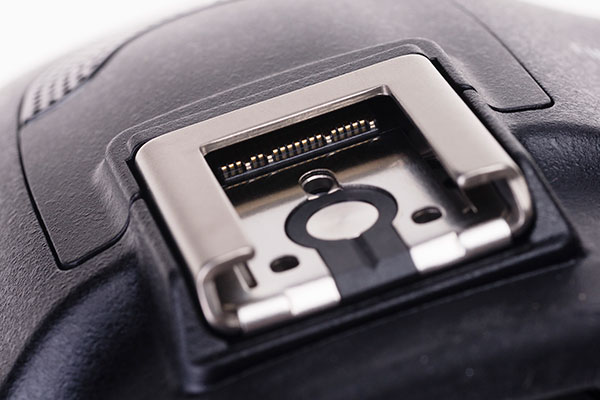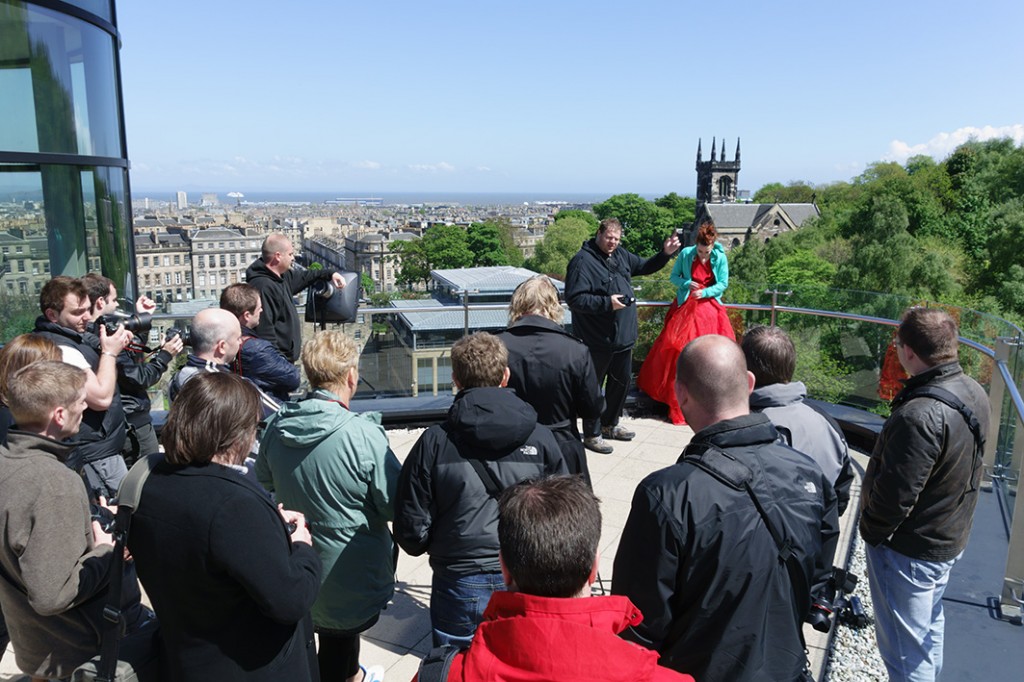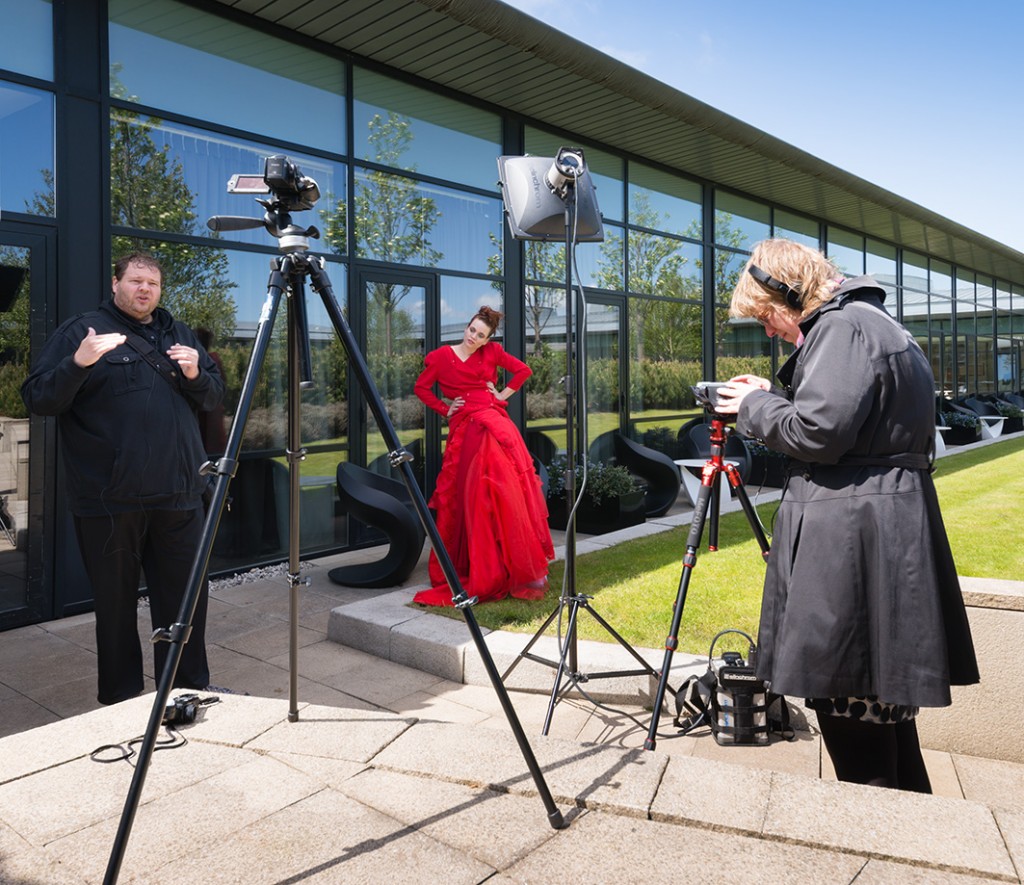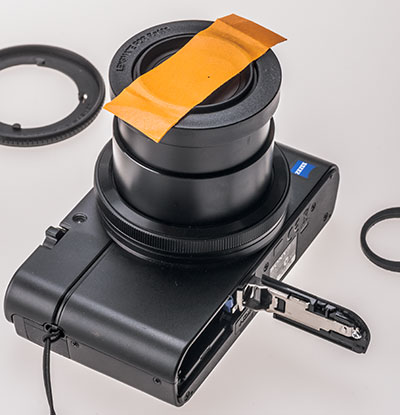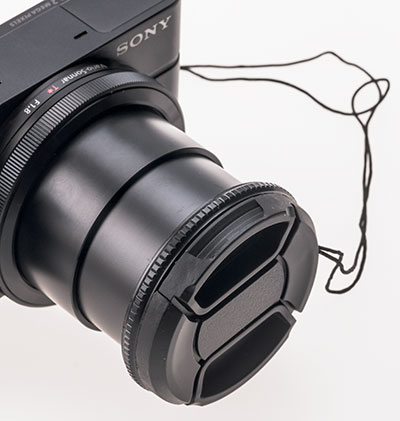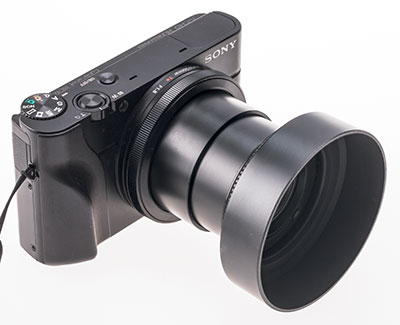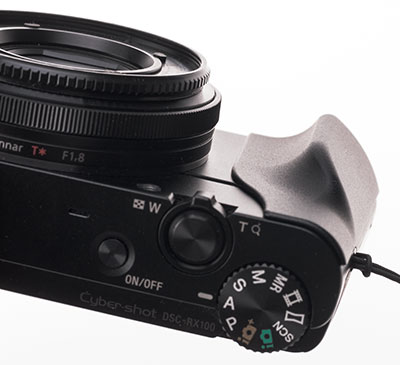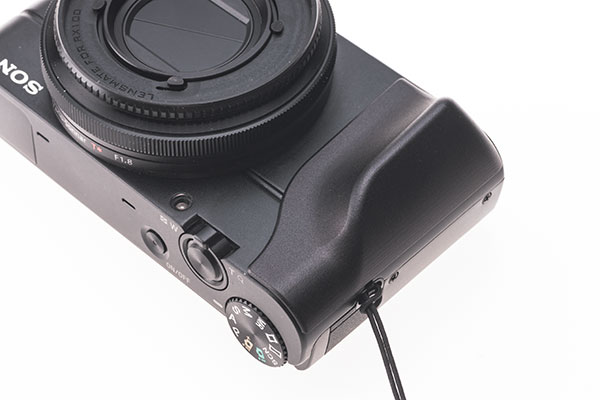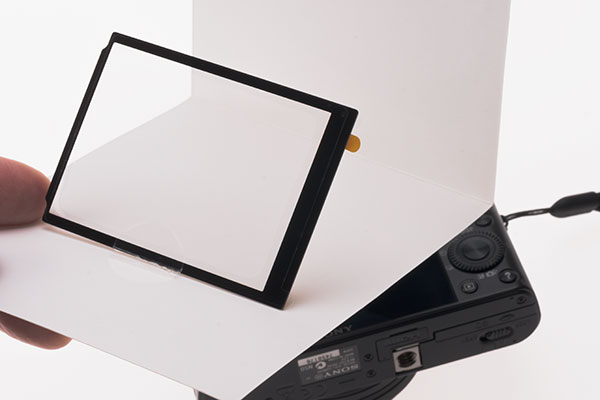20/20 vision – Sony Alpha 58 review
In the last year two cameras have been through my hands and impressed more than any others with the quality of their sensors. Those cameras were as different as they could be – the full frame Canon EOS 6D, and the pocketable Sony Cyber-shot DSC RX100. They have one thing in common, 20 megapixel sensors.
Of course there is no connection; a 24 x 36mm Canon sensor and a 8.8 x 13mm Sony sensor are very different. But if you shoot at ISO 125 on both cameras, and process from raw with a normally exposed scene, you will be hard pressed to tell the results apart.
So, when Sony – proving a giant-killer with the 1.0” format RX100 sensor – creates a budget DSLT model with an APS-C 20 megapixel sensor it would be reasonable to expect that this would outperform the RX100 and in the process prove superior to the 24 megapixel Alpha 77, 65 and NEX-7. It might even match the Alpha 99.
The Alpha 58 was announced at the end of February 2013, and some major websites had still not reviewed it by June. This is the first new Sony APS-C silicon for two years. It’s not found in any other body. Why the lack of urgent interest?
Perhaps, like me, the entry-level grade of the A58 has been responsible. It’s by far the worst Alpha body ever manufactured, and the first to have a plastic lens mount where machined metal is normally used. The whole physical feel of this Thai-made camera is inferior; it even has a slightly rough external texture which picks up handling marks the moment a store customer (or cynical on-line orderer intending to try, but return for a refund) so much as touches it.

It has a relatively low-resolution, small rear screen (2.7 inches and 460,800 pixels) which is in the simplest and most restricted kind of up/down angle hinged mount. Against this economy, though, you need to balance a better OLED electronic viewfinder based on a one-inch 1,440,000 pixel display and a change to the new Sony Multi Function Accessory Shoe (without a protective cap, and without the adaptor for the Minolta/Sony Auto Lock shoe). It also uses the larger FM-500H battery common to all other current Alpha models, not the smaller FM-50H used by the NEX and also by some previous Alphas like the A55.
What is really new about the A58 is the price. I was not interested in the camera, though curious about the new sensor, because it was $600 US or £499 UK with the most basic lens , a new 18-5mm f/3.5-5.6 SAM II with quieter and improved internal focus motor (delivered, like Canon kit 18-55mms, without a lens hood). Then while helping a professional friend decide how to replace an A350 used for some unique underwater photography where the Quick Live View AF function has no equivalent in other makes, I looked into the A58.

It was on sale, in Britain, including VAT and properly sourced from Sony, for under £350. The actual price of the kit was only £291 before added VAT sales tax. This was £100 cheaper than the lowest price of the RX100, less than any other DSLR on the market with anything like the same specification. Bear in mind what a replacement Sony battery costs (around £50) and what an 18-55mm fetches (officially more, but in practice around £100 new) and this body was coming in at about £150. That’s a point and shoot compact price.
So I bought one.
First impressions
The packaging for the A58 cuts down on many things – recent Alphas have been festooned with stickers, this one has a single swingtag and a sticker on the rear LCD promoting connection to Sony’s webserver to obtain PlayMemories Home, the kiddy-friendly name for what is probably quite functional software, if you happen to use a Windows PC.
When you have charged the battery and loaded it, the first time you turn on a similar message fills the rear screen. Everything works as you expect from an Alpha, though some mysterious glitch stepped the entered date back by two days. You can only set to complete minutes, not seconds. Some defaults are set to ‘on’ including Smile Shutter and Auto Object Framing, and for my use these were disabled and the recording mode set to shoot RAW+JPEG, sRGB.
The supplied lens is a cheap product glitzed up by the addition of a metal microskin on the front bezel, behind the rotating rubber rimmed zoom and focus tube, 55mm filter thread. The SAM focus is quieter than the original version. The plastic-on-plastic mounting action is smooth enough, but when changing between the 30mm SAM macro (very noisy and jerky motor in comparison) engagement of the contact array was not always positive and the lens had to be twisted back and forth once with the lock pressed to enable AF.
The A58 is set to use electronic first curtain and SteadyShot Inside sensor-based stabilisation, both switched via the main menus. The Function button, which can access most regularly used settings does not reach these directly (a second menu screen is involved, very easy to use). There are also direct access button-positions round the rear controller for the important Drive, Picture Effect and White Balance settings, and a dedicated ISO button close to the shutter release. These can be customised to a degree, like the stop-down/intelligent preview button on the camera front which can be changed to work as a focus magnifier.
What’s initially surprising is that the shutter sound is noisier than many cameras with flipping mirrors. It’s not a pleasant sound either, mechanical in a clockwork-motor way. It all happens after the shot has been captured, as you can tell if you make a long exposure. Maybe the lightweight mostly plastic construction of the body, with its minimal metal skeleton, fails to damp the sound.
The viewfinder has the same contrast and dark detail failings as the A77, and in some ways the old A55 finder provides a more useful view. The rear screen is not very bright, and there is no auto brightness setting, just a 5-step manual control. In return, whether you use the LCD or the EVF makes on a tiny 10 shot difference to the 700 frames expected from one battery using the former. This stamina is double that of an EVF camera using the smaller battery type and restores a more than acceptable battery life per charge to Sony’s consumer entry level.
What is excellent about the finder is the ocular. It has been designed to give extreme eye relief – 26.5mm from the eyepiece glass, 23mm from the rubber frame surround. This compares to 19mm/18mm for the same data on the A55 (eyepiece glass not well protected from dust and light ingress, but eye needs to be close) and 27mm/22mm for the A77 (very deeply recessed and shaded ocular, reasonable eye distance). Part of this is down to display module sizes: 1.0 inch for the A58, 1.2 inch for the A55, 1.3 inch for the A77. Matters are further confused by the A55 failing to use all its EVF for the image, so the eye also sees a large near-black surround except when using menus which then expand to fill it.
Overall, the EVF looks like a view which is A55 size but A77 quality, like using a cropped section of the A77/99 2.4 megapixel EVF module. Sony has made this much easier to use with spectacles, or with the camera held an inch away from your eye. So although it’s not the best finder ever, it may be one of the best choices for anyone who has trouble with eyepoint. I found the EVF very blue at its neutral point, and set two notches of warming up to match the eye’s view.
The controls are no different from any other Alpha, they don’t feel rough or weak, and every button push got a response as expected.
The cover for the single dual purpose SD/MSDuoPro card slot is not a tight seal, and does not need firm action to open. The synthetic rubber single seal door over the microphone jack (no manual level control), Micro USB matching the RX100, and Micro HDMI ports is a good flush fit. There is also a Minolta/Sony unique DC in socket with similar cover.
What’s missing is the old Minolta and later on Sony remote control socket. Instead there’s a pretty clunky wired remote which works via the micro USB port. It looks like a version of a Chinese generic. This connection offers the only way to get wireless remote control, with a suitable device, as the camera lacks the IR receiver and has no Drive Mode for it.
The body shape in the hand is just a little more cramped than the A55, far more so than the A580, both cameras we have and both ‘replaced’ in the Alpha line up by this one model. I’d say it was less of a good fit to my hand than the classic Minolta Dimage series bridge cameras, or the Nikon 1 V2. Both of these were around to compare directly.
The critical bit
Then after getting acquainted with the camera, comes the question of the sensor performance. Here, the viewfinder gave the first clue that unlike the ‘sweet sixteen’ CMOS this 20MP newcomer was not going to move any goalposts. In domestic lighting, the level of noise in the EVF is higher than the old A55 and comparable to the A77.
However, I chose to compare the A58 with the RX100, because of the great advances made in the RX100’s very small 2.7X sensor. The results show an interesting divergence from minimum (100 for A58, 125 native for RX100) ISO to maximum. There is almost no advantage to the A58 up to ISO 400. Both cameras, with similarly adjusted raw conversion, yield clean images and it’s not even easy to tell ISO 400 from 200 or 100. If you click the images below, you’ll access a full size original conversion from raw (ACR).
As you increase the speed, the 58 rapidly shows its advantage and by ISO 1600 has both a structure which looks finer in terms of granularity, and with far less chroma noise. Where a carefully processed ISO 800 from the RX100 might match a carelessly handled 800 from the Alpha, at 1600 it’s very difficult indeed to close the gap. By 6400 the RX100 is not really useful but the 58 can still deliver a fairly normal looking shot – it does begin to look like a desperate measure. Then you have 12,800 and the absolutely pointless 160,000 top setting which seems to be there for advertising purposes.
Taking into account differences in colour rendering, the advantage of the larger sensor is levelled if the RX100 file is reduced to 4500 x 3000 pixels and moderate chroma noise reduction applied. In relative terms, the small sensor is better, because it’s actually only a little over one quarter of the size of APS-C.
Compared to the 16 megapixel Sony sensor (NEX-5n, A55 and many later models as well as Pentax and Nikon variants) the 20 also fares pretty well. It has higher levels of luminance noise but minimal chroma noise. It’s not easy to reduce the luminance NR without softening detail, when using Adobe Camera Raw or Lightroom. It does not harm sharp detail much if left alone; if this sensor actually has an AA filter, it’s very weak.
This a MacBeth ColorChecker rendered using the official sRGB values.
This is an ISO 200 shot on the A58 with the greyscale white balanced to match the above, Iridient Raw Developer conversion using Iridient’s A58 profile. See later comments on colour and reds.
As for dynamic range, it falls off as the ISO in increased. At ISO 100 or 400 a typical high contrast sunlit scene is perfectly recorded, with only bright specular highlights clipping to 255-255-255. It can handle everything from shadows on dark areas to direct light on white. A few practical comparison shots show that the RX100 can do exactly the same things – indeed, precisely the same areas clip at the highlight end.
This simply indicates to me that Sony has matched the processes used in the two cameras against a common exposure and contrast standard. I’d have the rate the JPEG engine of the RX100 a little better than the Alpha, and images seem to need less work. Against the Alpha 99, the 58 gains some significant processing speed in raw converters as it’s producing 20 megapixel 12-bit files compared to 24 megapixel 14-bit.
A hidden benefit of the 20 megapixel sensor is that if you use Adobe Camera Raw, this program offers a range of preset optimised output sizes converted directly from raw, which can be previewed at 100% of their actual pixel size before conversion. All 24 megapixel cameras have this as their largest output size, all you can do is downsample. 20 megapixel cameras offer a 25 megapixel output option, as do 16 or 18 megapixel models. The RX100 has already proved to me that it can make a 25 megapixel image that’s hard to tell from a native A77/99 image. The same goes for the Alpha 58. It can be set to export to this larger size, and if you use a top grade lens and low ISO, the result will be better than a native 24 megapixel at higher ISOs with a medium-quality lens.
Overall, I find it hard to rate the new 20 megapixel sensor as better than either the classic 16 megapixel ‘sweet spot’ sensor or the maximum 24 megapixel APS-C, but it is as competent as either of these in its own right. I guess the truth is that at all these resolutions, superb image quality is possible.
Other aspects of performance
Since the A58 uses the 15-point, 3-cross AF sensor which has been proven ever since it first appeared in the A580 and A55 it has identical performance; fast, very accurate AF down to EV -1 (50mm f/1.4). The exposure metering is, again, the familiar 1200-zone Sony system and works down to -2EV.
The actual focusing mechanism works no better with SAM or SSM lenses than with screw drive. It’s not the best ‘old’ mechanism in there and it lacks fast/slow AF setting, but it’s fast for certain. In low light although AF will lock, it needs a good target. Throughout my use of the camera I found the focus the least accurate and consistent of any Alpha body I’ve used, leading me to question whether I had accidentally set the lens to MF, so many pictures were clearly focused on some other plane than the subject, nearly always a definite back focus. The AF module is officially the same as the A55, A580 and so on. I can’t help thinking it is the same design but perhaps, like the rest of the camera, built to a budget.
Switching between rear screen and EVF using the eye sensors, or if you have the rear screen off just turning on the EVF, is good on this camera. Its balance tends to prevent the eyepiece sitting against your chest, and thus avoids accidental activation, but it’s always brought the EVF into action by the time your eye is close enough to use the finder.
Regrettably the EVF and rear screen both lack the instantly visible high resolution needed to know whether your image is pin-sharp. Even the far superior finders and screens of the A77 and A99 do not give you the same awareness of this as an optical finder. The good news is that Focus Peaking can be turned on. This really isn’t sensitive or accurate enough unless you magnify the image, and much of the time, you simply don’t have time to do this.
So, the A58 is capable of pin-sharp images and you can be sure under the right conditions with the right technique that you won’t be short changed out the 20 megapixels you expected. But a lot of the time for everyday shooting it’s not very good at getting AF pin-sharp, and those same 20 megapixels do their best to show any error clearly.
In practical situations, ISO 400 is as noise-free as ISO 100 and gives you the chance to use a smaller aperture for more depth of field. The 18-55mm SAM II lens is not very sharp at 55mm wide open, and it proved optimistic to expect f/6.3 or f/7.2 to be much better. The old ‘one stop down for zooms’ rule works well enough. The 20 megapixel sensor shows signs of slightly softening at f/11 so the sweet spot for me has to be around f/9 or f/10.
You can click the images above for full size versions (same applies to all those shown in link frames like this).
As for colour, you’ll be happy if you have always like Canon DSLRs. not so happy if you were either a Sony (sunny!) or Minolta (full spectrum) sensor colour fan. This sensor shows every sign of having relatively weak RGB colour filters and a non-linear response, with underexposed shadows on higher ISOs in daylight tending towards magenta. It’s rather too easy to get putty-pink skin tones and a certain lack of subtelty in sky gradations, though blues and greens are not bad. Subjects like red flowers test the colour discrimination of the sensor to the limit.
It’s truly intense – but is it realistic? Camera profiles for raw conversion may tame this.
Let’s just say that every other current Sony Alpha model, and many past ones, will yield more visible difference between close hues. This is what you might expect from the more densely populated 20 megapixel sensor but, as ever, I’m left wondering why the little RX100 seems able to yield better colour (whatever DxOMark.com may say – but they also put the low light ability of the RX100 way below its actual performance).
At present there are no camera profiles available when converting files using Adobe Camera Raw, and the Adobe Standard colour seems to handle reds from the A58 badly (this is why I refer to Canon – the reds look much the same as problem Canon reds of the past). I don’t believe that red paint, red clothes, red street signs and red flowers are all are one type of red and when clipping warning is turned on, almost all the reds clip.
Shutter and flash
The shutter of the A58 is able to synchronise short-duration fast triggered flash, such as a thyristor camera top gun, up to 1/250th on manual without any shutter curtain clipping; at 1/320th, a shadow intrudes slightly on the frame. This is a better performance than indicated in the specifications, but for studio flash (mains powered) I would recommend working at 1/125th and for Sony/Minolta dedicated flash at 1/160th.
The shutter itself does not operate or make any noise whatsoever until AFTER the picture is captured when you use ‘Electronic First Curtain ON’ setting. The capping shutter blind has a cycle (close and return) of approximately 230ms overall in single frame mode resetting the camera ready for the next shot, or 115ms for continuous shooting which fits in with 8 frames a second fastest (cropped) frame rate. If you use the mechanical first shutter curtain, this adds exactly 50ms or 1/20th of a second to your release lag, which is not as easy to measure but seems to be in the order of only 20ms (1/50th).
Overall, this makes the A58 one of the most hair-trigger responsive cameras you can possibly own for capturing action – or would if the AF were faster and more reliable. Pre-set focus, use manual exposure, and you can trigger exposures with this camera as fast as you can think – just like the A99.
With its built-in flash or dedicated Sony flash, there’s the usual small delay caused by preflash. You may think the shot is being delayed more, because the shutter operates after the exposure, and then as the finder returns to life you get about 1/30th of a second of ‘review’ of the shot taken even with the 2s or 5s (etc) image review disabled. This happens all the time with the camera, the first frame or two of the finder refresh is a fleeting glimpse of your captured shot, and it’s useful. With flash you may be viewing a dark scene, the finder itself is blacked out when your flash fires, but this sudden bright image looks almost like a delayed flash through the eyepiece. Of course it is not, this is just an impression.
The built-in pop up flash becomes a rather aggressive AF illuminator when flash is active and the camera has trouble finding enough light for an AF lock. You certainly do see the effect of this through the finder, a surprisingly long and bright burst of light. It must drain the battery fast.
Flash exposure, long a problem with Alphas, seems predictable. A pile of black camera bags produces a full exposure (histogram hitting the buffers at the right hand end) while a white paper document in the middle of the frame results in one stop under. No doubt users will find specific flashguns or situations which produce wildcard exposure. That’s why you should always enable DRO+ Automatic or something like level 3 when shooting with flash. This dynamic range contrast optimisation process can produce great flash pictures out of the camera but remember it only works well at lower ISO settings, do not go over 800 and expect DRO+ to keep you smooth noise-free image.
The A58 appears to allow DRO to be used at higher ISOs, which earlier cameras often lock out because of its effect on shadow noise. However, both the printed manual and the downloadable handbook contain many inaccuracies and ambiguities; even Sony’s specification for the camera on-line has problems, listing standard and magnified views in the finder instead of eyepiece glass and surround against the two eye-point figures.
Wireless flash operates in the usual way, with the pop-up flash acting as a commander once paired by first fitting the remote flash, turning on, selecting WL Flash mode, and removing the remote. This is now a 20-year old Minolta technology updated – something which took Canon fifteen years to catch up with, after which they progressed further. The Alpha wireless flash works but it’s frozen in time. At least, with the optional adaptor, you can use earlier Minolta and Sony flashguns of the HS(D) generation and later.
HS is the high speed burst mode (long duration resembling continuous light) and the A58 can use HS flash at all shutter speeds up to 1/4,000th. The A58 has a useful Slow Sync function which delivers and automatic dragged shutter setting according to the available light, and a Rear Curtain sync as well. The camera may, with the built-in flash, switch to a slow longer recycling time even if you load a fresh battery when shooting flash intensively. This is to prevent the camera (not the flash) from overheating.
Studio compatibility
One reason I obtained an A58 to look at was because Ian Cartwright, a friend of mine who shoots models and babies underwater, had obtained an Alpha 580 on my advice to replace an A350 only to find that this camera forces a strange blackout delay of almost half a second when using any dedicated flash. The A350’s otherwise similar Quick Live View does not have this peculiar firmware fault. I can confirm that the A58 fires in real time, and unlike either of the other two models, can be used with PocketWizard or an infrared trigger. That’s because the finder view can be switched to ‘Setting Effect OFF’ which defeats exposure simulation and gives you a bright view even in manual with setting like 1/125 and f/11 under dim modelling or ambient light. The A58 can be used in the studio as easily as the A99, because of its ISO hot shot compatibility and this feature.
For this studio shot I chose not to use flash, it was lit by my Interfit 3200 tungsten outfit (great for video) instead. The colour rendering matters little because the image is adjusted in processing to give this look.
As to whether you would ever want to use an EVF camera for studio work, that’s another matter. I have bought a replacement Alpha 900 after three months trying to use EVF for studio set-ups and temporarily reverting to my A700. It’s not just the quality of what you see when composing and adjusting your studio shot (stray hairs over a face or a clothing fibre landing on your still life are just not visible with EVF) it’s the need to have power saving permanently turned off to keep the screen or finder awake as you do all the lighting and reflectors, background and subject adjustments. Nothing is more annoying than having to half-press the shutter to wake up your camera every time you go back to check – and with the A58, the shutter release is so light it’s easy to take a shot instead of waking the finder view.
The A99 can be used tethered and plugged in to AC, with a USB cable to a remote capture Mac or PC, and a live feed to an HDTV monitor. Do that and the business of setting up and adjusting a studio shoot becomes far easier with live view. I just don’t do enough work of any kind to justify that, it’s quicker to keep using the old familiar glass prism. It looks as if the A58 can be used the same way, joining the A77 and A99 by having PC Remote capability and HDMI previewing, while the A900/850/700 are the only other choices in Alpha history able to use PC Remote.
This does open the door to using a netbook, for example, as an intervalometer timer or remote release. There is no App for iOS or Android but the PC Remote control panel is well designed to fit a smartphone. There is no Wifi in the camera (it has good compatibility with EyeFi cards, invoking special display icons).
Video
Due to the softness and lack of AF sensitivity of the 18-55mm SAM II lens, my couple of quick test videos in real situations were not stunning but also not too bad. The sound quality is reasonable without plugging in my Rode Video Mic, stabilisation of video is very good indeed, and by using the dedicated video setting I was able to set my own shutter and aperture. You can also lock out the movie button except when the mode dial is set to video, preventing accidental video clips.
If you want the camera for video, either the 18-135mm SAM lens or even better the 16-50mm f/2.8 SSM (quiet fast focus) will do much better than the 18-55mm. The A58 lacks the highest quality video encoding of the A77 and A99, but you can get the vital requirement of 25/30fps at 1080p, the second highest level found on other Alphas. The clip above is at best quality with the 18-55mm; it took some fairly extreme action (the car driving right towards the lens) to persuade the AF to bother to try to track, most of the time it was telling me, hey, that’s good enough, no need to refocus… or even focus to start with.
Special functions
Although the A58 has been trimmed down in some ways, other aspects have been improved, compared to past entry-level cameras. There is no wireless remote drive mode, and no 2sec self-timer, so unless you buy the unusual Micro USB wired release you have to use a 10sec timer for shake-free tripod work.
Bracketing is only three frames, but the range is now large – 0.3EV, 0.7EV, 1EV, 2EV or 3EV steps. HDR Auto can also use a 6EV span (±3EV). You can not control the auto ISO range, but it’s a reasonable 100-3200. If you shoot JPEG and choose multishot noise reduction, an auto 6400 may be selected, and some of the Scene modes may also enter this range. But if you shoot raw, you have to select ISOs from 4000 to 160,000 manually which makes them harder to get by mistake.
There are many picture effects, both single and multi-shot, in the A58. One of the more interesting is Rich Tone Black and White, which uses three shots to build a gradation resembling a traditional darkroom print.
The sensor does not appear to support sub-frames, or cropped raw files, in the same way the A99 or Nikon D600 can do. The maximum frame rate for continuous shooting is 5fps for full size raws, but the buffer is minimal and the best I could get was four frames in a burst before a major pause and intermittent resumption, never at 5fps. On raw you get click-click-click, off to make coffee, click, take a walk round the block, click, remember to turn the lights off before going to bed. It’s that bad. JPEG Fine, which delivers 4 frames at 5fps, then becomes intermittent and variable in capture speed but a little faster than raw.
To get anything better, you must convert the camera into a 5 megapixel 3X factor (2X crop of the 1.5X sensor) by setting it to T8 (Tele 8fps) continuous mode on the main control dial. This delivers about 8.1fps for 24 frames on a 95MB/s SanDisk card, then slows to capture around 5-6fps in a regular pattern of two frames at 8fps, hesitation, two more and so on. On a slower card, Transcend SDHC, I got 12 frames continuous and a slower more regular tail. Memory card speed is clearly critical for getting the best from the A58.
Since you can’t get a 5MB cropped raw, exactly how this mode functions is a bit of a mystery as JPEG images are produced via an intermediate raw file – that’s how things work. So inside the camera, 24 frames can be processed and cropped in 2 seconds – but it can’t even manage one second of unprocessed raws at 5fps. This indicates the processor is fast and the input buffer big enough, it’s the output buffer and card interface which causes the bottleneck. Card interfaces and drive assemblies are third party products normally bought in by the camera maker, while the main processor is their own (or a dedicated design based on a Fujitsu module or other OEM).
This camera is extremely low cost and I think this is simply one area where cost savings ended up reducing what could have been a great specifiction and performance.
Digital and Clear Image Zoom
The A58 has a Zoom button, like a Cyber-shot DSC RX100’s zoom control that goes beyond the mechanical range of the zoom. Since you can’t go beyond the zoom on the lens itself, you go to the tele extreme, press the zoom button and a bar appears on the displays. Up to 1.4X magnification, you get a cropped shot (JPEG only) but this crop fills the EVF/screen and is enlarged by interpolation to 20MP. Up to 2X, you get Clear Image Zoom which is profiled or custom interpolation, similar to software packages which can enlarge JPEGs better if they have a profile for the camera used. Up to 4X, the rest is ordinary Digital Zoom which means the resulting 20MP image has really been created from a 1.25MP area of the sensor, and it shows.
I made some tests with the 18-55mm and its vague focusing and overall modest quality lowered the bar for the digitally zoomed range. Then I tried with my extremely sharp Sigma 70mm macro. I think the 1.4X range is acceptable for all normal uses, the 2X range is almost acceptable, beyond this the softness overpowers any possible reason to want a 20MP output file. There is a mark on the zoom bar showing the change from resized and Clear Image (1.0-2X) to Digital Zoom (2.0-4.0X) but I was unable to get the zoom to fix on 2.0X, instead it insisted on using 1.9X or 2.1X but placed the 2.1X on the ‘safe’ side of the mark.
As expected, the A58 has Sony’s excellent sweep panorama mode, and just about every other Sony original technology around from face recognition and smile shutter through to auto framing (an intelligent crop which keeps a copy of your uncropped JPEG too) and AF object tracking. Its Intelligent Auto and Super Auto modes will serve the beginner and general family photographer well.
The A58 has sensor cleaning and does vibrate the sensor on shutdown, not on switch on; this is not listed in the specification, which just mentions the anti-static coating. Manual cleaning is possible and Sony make two notes of interest – they advise blower cleaning the back of the mirror before lowering it (so clean both this and the sensor in one step) and they say that you can not shoot with the mirror raised. My camera had no sensor spots on delivery.
Future expansion
The A58 shares with the NEX-6 and Cyber-shot DSC RX1 the new Multi Function Shoe, and some of the accessories for this shoe are futureware. All these cameras lack the GPS found in the A99. The Multi Function Shoe’s interface includes pins to connect a GPS device and record location data as you shoot.
Despite my affection for the robust qualities of the little Alpha 55, the Alpha 58 does more and when armed with my 16-80mm CZ lens makes a good travel camera. For that, I want to have GPS. So of all the possible future accessories for the shoe, this is the one I hope Sony will produce soon. Other possible accessories are a Wifi remote shooting module (the interface could allow image preview remotely) and a PocketWizard or similar wireless flash trigger. The shoe interface might even enable uncompressed video streaming to external recording devices, or back up between the camera and an external SD card or USB stick. It can also feed an external larger video monitor or a mic/headphone module which might have auto gain over-ride for sound recording – or perhaps these functions may be combined one day in a video/audio adaptor.
These are the prospects which this one change in the Alpha system brings, yet there is no sign that Sony is rolling out MFAS accessories. It’s also true that each camera’s own MFAS may have missing pins, or differently assigned pins (that would be seriously bad planning). You can not, for example, use the EVF of the RX1 on the A99 shoe, though both cameras have 24 megapixel sensors and the same EVF display resolution. The camera does not recognise it.
Made in Thailand – not a bad thing, and Thailand has a big camera industry with Nikon, Sony and others. But this does feel like the lowest cost, most pared-down offering ever in the Sony DSLR/SLT lineage.
Changing the market
It is a pity that a camera with a brand new sensor and many advanced features and functions should ever have been designed down to the lowest price-level by reducing the specification of far too many components, from the lens mount and body itself to the displays and the buffer and card interface.
Sony’s manual and general approach to the camera menus and built-in help indicate that it’s targeted at what Americans would call a ‘soccer mom’ market. Well, your own kids are always beautiful even if the rest of the internet community groans inwardly every time another snapshot of infant overfeeding is posted to support how wonderful dad’s new camera is. They are always polite and agree.
Same goes for this camera – for those who acquire it as a new addition to the family, it will be the best thing ever made. And in some ways they will be right, nothing else comes close for the money. Unlike the sprogs, the Alpha 58 has inherited many desirable genes but suffered from malnutrition during its gestation. It could have been a robust, capable semi-pro camera in the tradition of the A580, the last Sony Alpha to have an optical finder.
Perhaps the 20 megapixel sensor will appear in a higher level body. How about an A68? For me that would be close to home (look it up on a UK road map!).
– David Kilpatrick



































